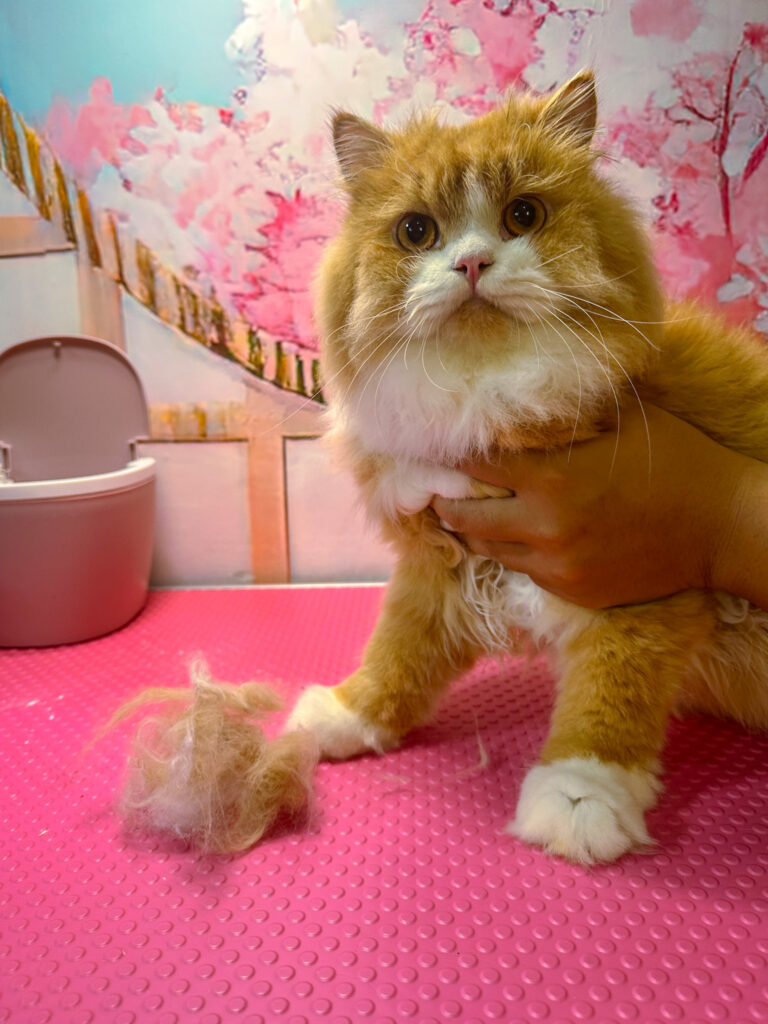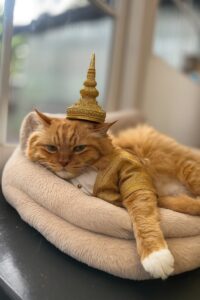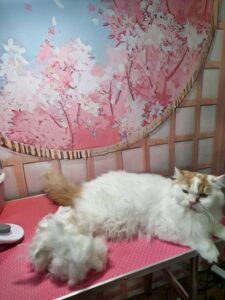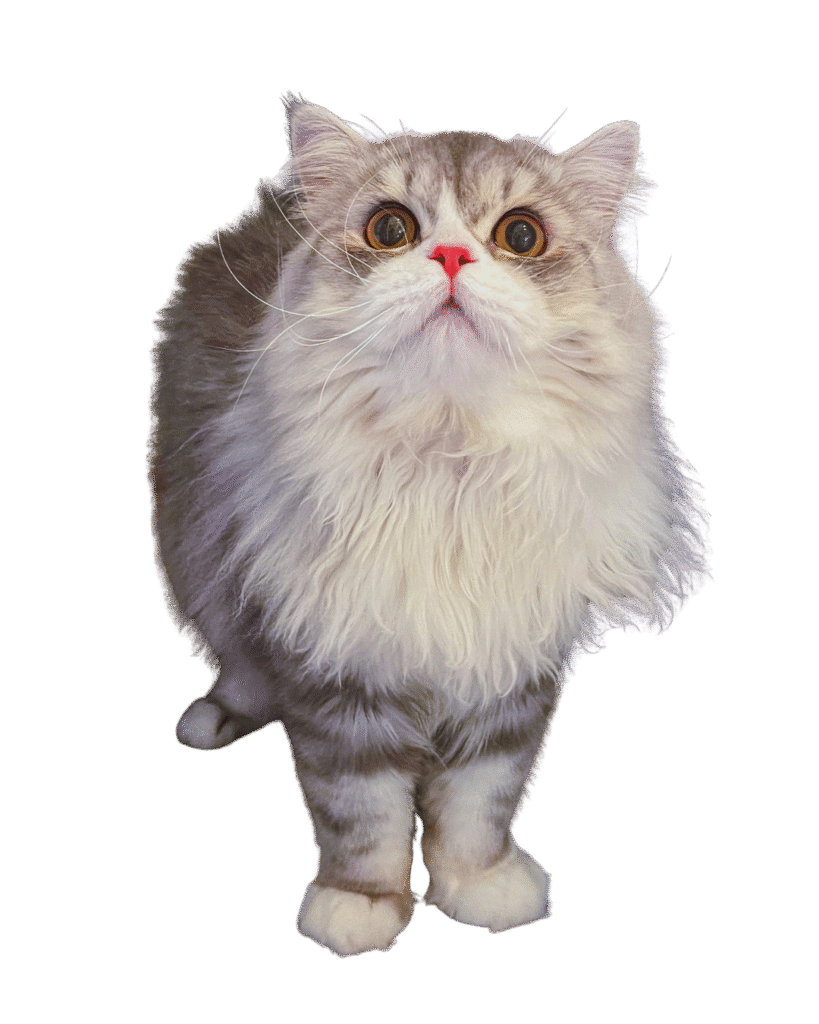The types of cat coats come in a dazzling variety, each with unique grooming needs. Whether you have a short-haired tabby or a hairless Sphynx, understanding your cat’s coat type is essential to providing proper care, maintaining health, and avoiding issues like mats, buildup, or skin infections.
This comprehensive guide will walk you through the main coat types and how to groom them effectively.
Short-Haired Cats
Examples: Siamese, British Shorthair, Exotic Shorthair
Coat traits: Sleek, low-maintenance, but prone to shedding.
Grooming needs:
- Frequency: 1–2 times per week
- Tools: Rubber grooming mitt, soft bristle brush
- Goal: Remove loose hair, spread natural oils, prevent excess shedding
While short hair seems easier to manage, owners often underestimate the shedding. Regular brushing keeps hair off furniture and reduces hairballs. Brush 1–2 times per week using a rubber brush or soft bristle comb. Helps reduce shedding and distribute natural oils. Exotic cats require extra cleaning around the eyes and ears due to their flat faces and frequent discharge.
Long-Haired Cats
Examples: Persian, Maine Coon, Ragdoll
Coat traits: Thick, fluffy, beautiful—and high maintenance.
Grooming needs:
- Frequency: Daily
- Tools: Wide-tooth comb, slicker brush, detangler spray
- Goal: Prevent mats, reduce tangles, maintain coat shine
Without daily grooming, mats form easily behind the ears, underarms, and tail. A routine not only prevents discomfort but keeps the coat photo-ready. Daily brushing with a wide-toothed comb and slicker brush to prevent mats and tangles. Pay extra attention to armpits, belly, and under the tail where mats form easily.
Curly-Coated Cats
Examples: Devon Rex, Selkirk Rex
Coat traits: Unique wave or curl patterns that are delicate and sparse.
Grooming needs:
- Frequency: Once every 7–10 days
- Tools: Soft baby brush or clean microfiber cloth
- Goal: Maintain curl definition without breakage
Curly coats are prone to oil build-up but don’t shed much. Avoid heavy brushing to prevent frizz or damaging the natural curl.
Hairless Cats
Examples: Sphynx, Donskoy
Coat traits: No fur, but oily skin that’s prone to dirt and irritation.
Grooming needs:
- Frequency: Bath weekly or every other week
- Tools: Mild cat-specific shampoo, warm water, soft towel
- Goal: Remove oil build-up, prevent clogged pores
Don’t skip bath days, even hairless cats need grooming. Wipe folds regularly to avoid skin infections and moisturize when needed. Bathe once a week using a gentle, cat-safe cleanser. Their skin produces oils that build up without fur to absorb it, leading to acne, odor, and possible infections. Clean ears weekly and wipe skin folds regularly. Keep them protected from sunburn or cold temperatures.
Double-Coated Cats
Examples: Norwegian Forest Cat, Siberian, Scottish Fold
Coat traits: Dense undercoat with a longer outer layer
Grooming needs:
- Frequency: 3–4 times per week
- Tools: Undercoat rake, de-shedding tool, slicker brush
- Goal: Reduce matting, manage shedding, keep undercoat healthy
This cat’s coat type is especially prone to seasonal shedding. Deep brushing is key to avoid painful mats and overheating. Brush several times a week with an undercoat rake and slicker brush. Focus on removing loose undercoat to prevent matting and excessive shedding.
Types of Cat Coats: General Grooming Tips
- Inspect during grooming: Check for fleas, ticks, lumps, or skin irritation.
- Good nutrition: A balanced diet promotes a shiny, healthy coat.
- Bond through grooming: Make it a calm, rewarding experience with gentle handling and treats.
For more info, check our Guide with Cat Grooming Tips
FAQs
1. How can I tell if my cat’s coat type needs more grooming?
Signs include excessive shedding, dandruff, mats, or your cat licking itself more than usual.
2. Can I use human shampoo on my cat?
No. Human products can irritate feline skin. Always use shampoos formulated for cats.
3. What’s the best brush for my cat’s coat type?
Short-haired: rubber or fine-bristle brush
Long-haired: wide-toothed comb + slicker brush
Curly: soft brush or cloth
Double-coated: undercoat rake + slicker
Conclusion
By understanding your types of cat coats and following the right grooming practices, you’ll help them stay healthy, clean, and happy. Tailoring your approach to your cat’s specific fur — or lack of it — makes grooming easier and more effective. Make it a part of your regular routine, and your feline friend will thank you.







